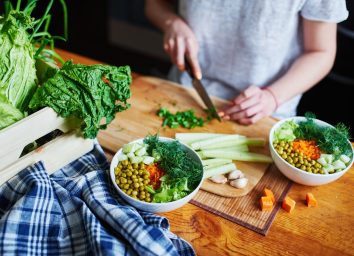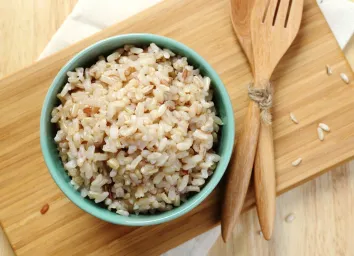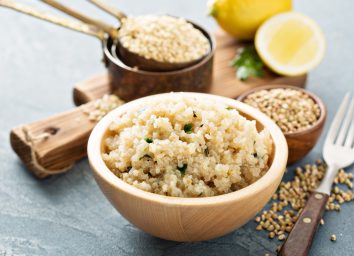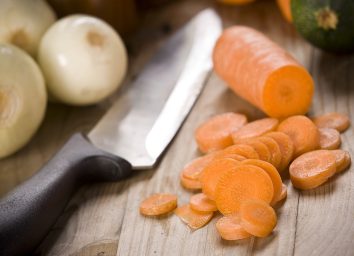How to Cook Asparagus So It Becomes Your New Favorite Veggie
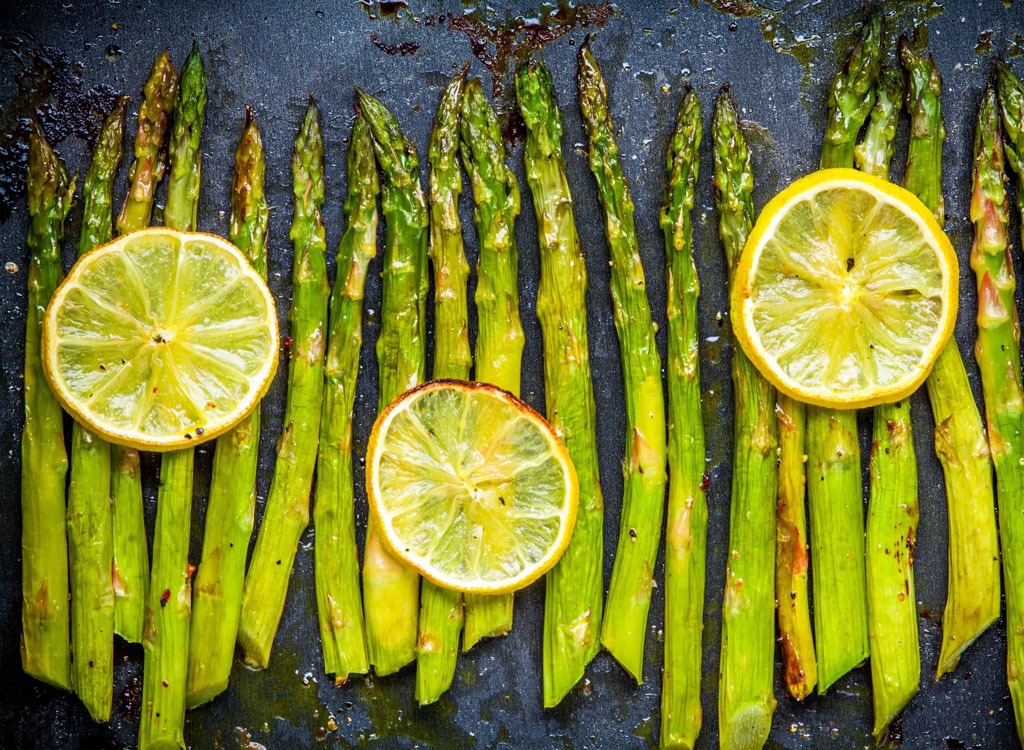
Roasted asparagus is one of our go-to side dishes because besides being super versatile and delicious, the veggie is also a wonderful source of vitamins A, C, and E, plus potassium, protein, and fiber. Whether you're pairing the spears with a piece of fish for dinner or noshing on them on their own, we've found out how to cook asparagus perfectly every time. Next time you grab a bunch at the supermarket, heed Chef de Cuisine at Fairway Market Vincent Olivieri's tips below.
First, find out how to pick asparagus
"Always choose firm asparagus. As it ages, it wilts, and you want to make sure that the asparagus is firm and vibrant, whether it be green, purple, or white," Olivieri says. "Green asparagus should have a vibrant green color, so if you see it's browning, it's probably old. Same with purple asparagus, except when purple ages, you start to see more hints of green coming through. Lastly, white asparagus should be very white. The way white asparagus is grown is by depriving it of light. Asparagus crops are tarped and harvested at night to ensure that there is no direct sunlight on it to trigger photosynthesis [which prevents the production of the green pigment chlorophyll]. If you notice that your white asparagus is starting to turn a greenish-yellow, it's probably because it's been out on display for too long."
Now that you know how to pick the perfect bunch, let's move on to how to prep asparagus.
How to properly cut the stems
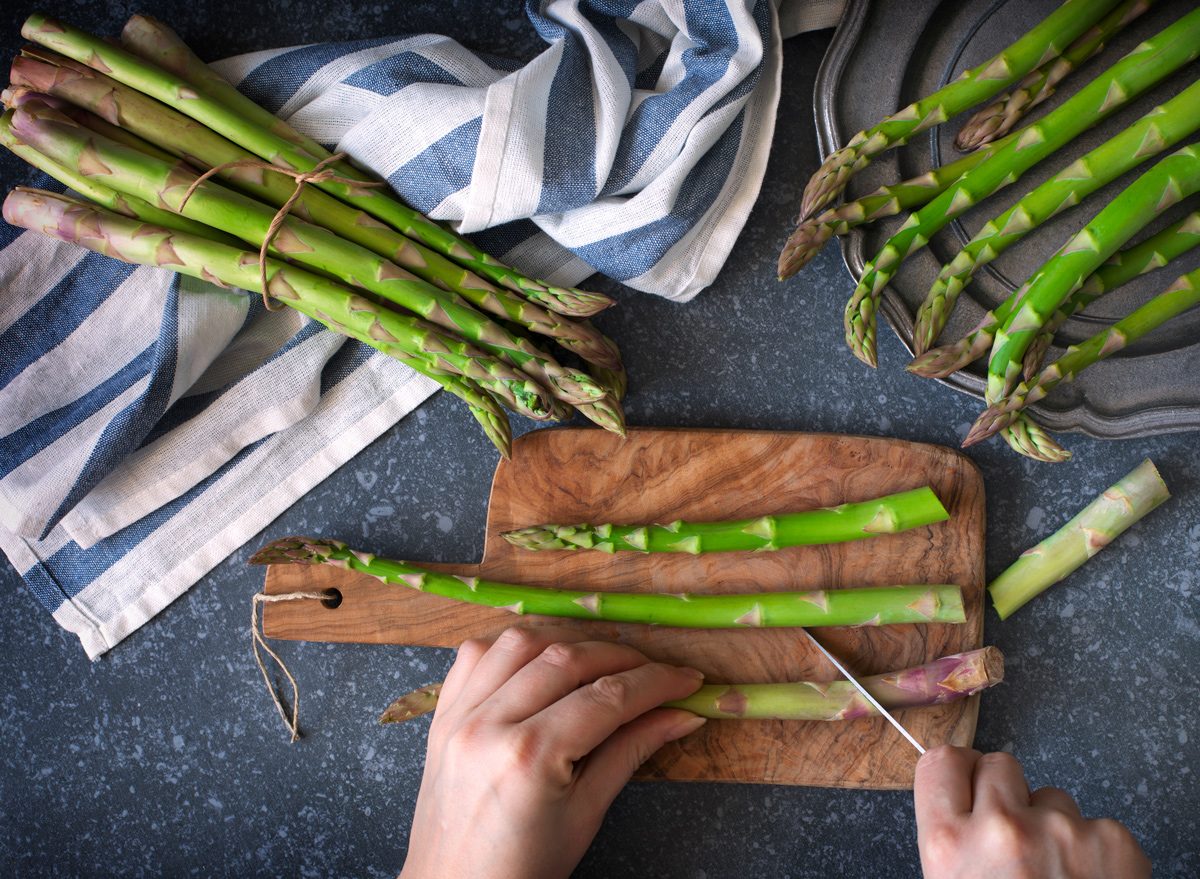
No one wants to spend time chewing on tough, stringy stems—which is why it's essential to chop them off. "From the crown down, asparagus starts to become more fibrous," Olivieri says. "Usually, a bunch has two sets of rubber bands on it. What you should do is roll the bottom rubber band upwards about an inch to where you start to see the color change. Keep the rubber band on and cut slightly above the band so that the stems stay bunched and they're easier to discard. Another way to check where to cut is by gently bending the stalk: it will snap where you want to cut it," Olivieri says, adding that, "When dealing with white asparagus, make sure to peel the fibrous skin below the crown, as it is pretty much inedible and indigestible."
How to cook asparagus
Asparagus is a very versatile veggie that can be blanched, steamed, boiled, and grilled, but roasting the veggie in the oven is a foolproof way to achieve a perfect side dish with minimal effort every time. Here's how to do it:
- After you've cut the stems properly, preheat the oven to 400 degrees Fahrenheit.
- On a large sheet pan, toss the asparagus with olive oil, and season it with salt and pepper. The spears can be arranged close to each other, but avoid any overlapping.
- Roast until tender (about 15 minutes).
Pro tip from Chef Olivieri: Like any green vegetable, the longer you cook it, the more the color will fade to a dull ugly green. Minimizing the exposure to heat will ensure a crisper texture and a vibrant green color when cooked. - Asparagus pairs well with lemon, Parmesan cheese, and even crispy fried shallots. Feel free to add on top before serving!
Creative ways to spice up your asparagus dish
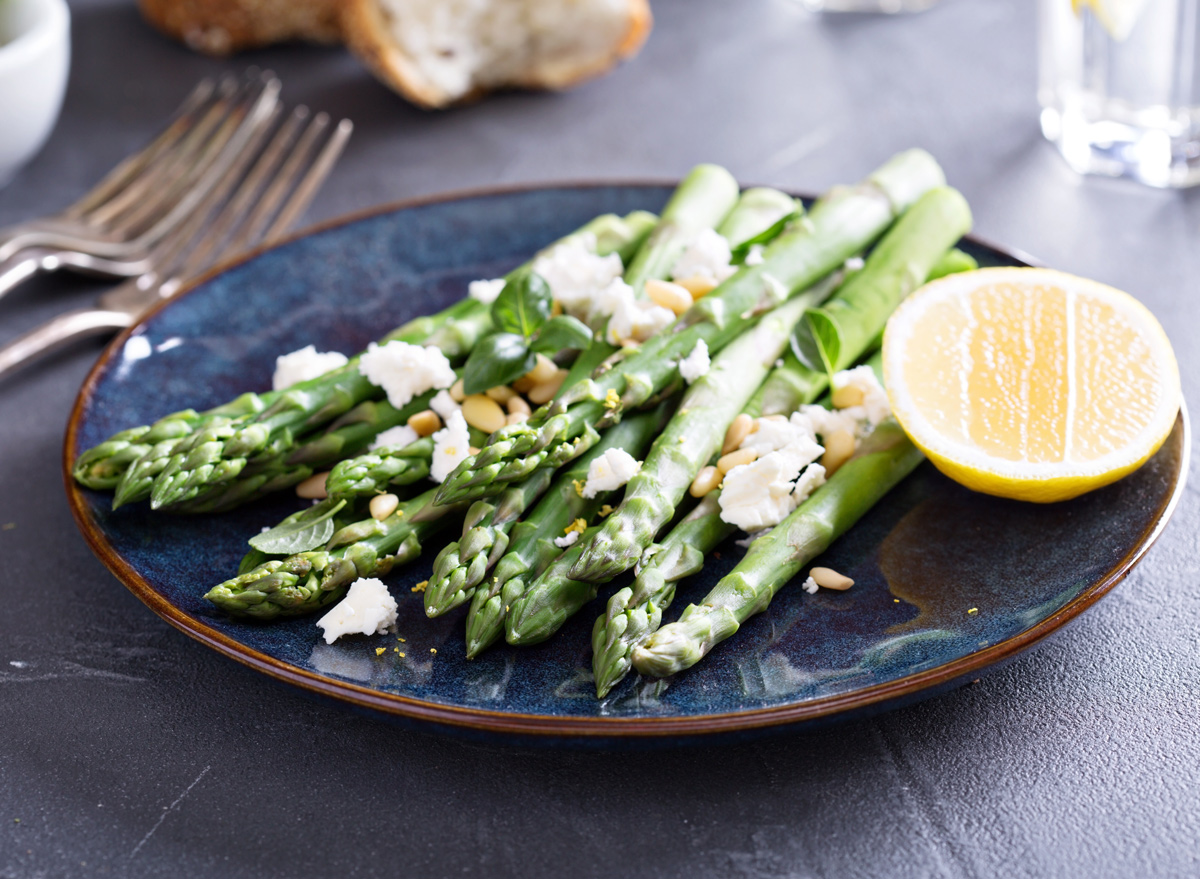
"Asparagus loves lemon, loves Parmigiano Reggiano, and coincidently loves all other vegetables that are harvested during spring," Olivieri says. "Whether it be peas, artichokes, carrots, or spring onion, asparagus always acts as a great co-star when combined in a spring vegetable medley."
While you can definitely jazz up a stir-fry with this springtime superfood, you can also eat it raw! "Being one of the first vegetables to pop out of my garden in the spring, it is always exciting to snap it and eat it right there on the spot and daydream about my future summer harvest," Olivieri says. "You can use a potato peeler to create asparagus ribbons, which you could toss with fresh lemon juice, extra virgin olive oil, and a bit of Parmigiano to make a quick and easy spring salad." Talk about an easy and delish way to get your day's fiber in!
